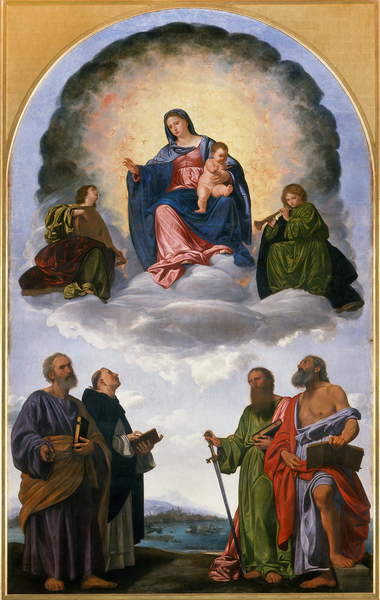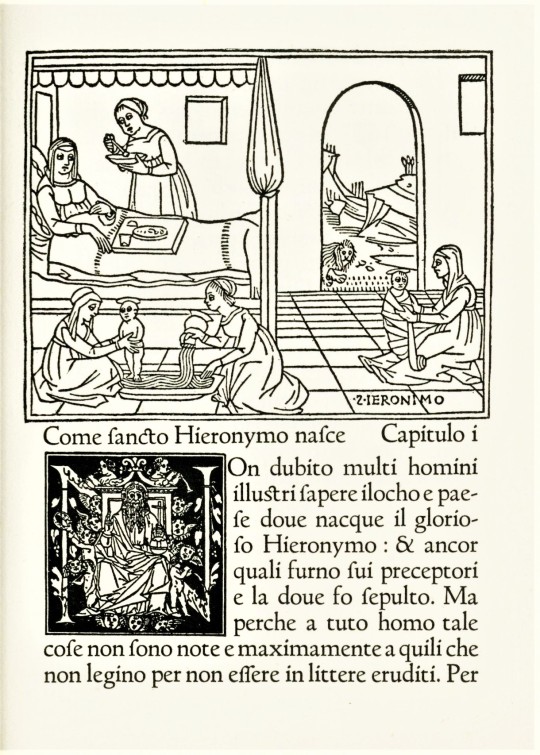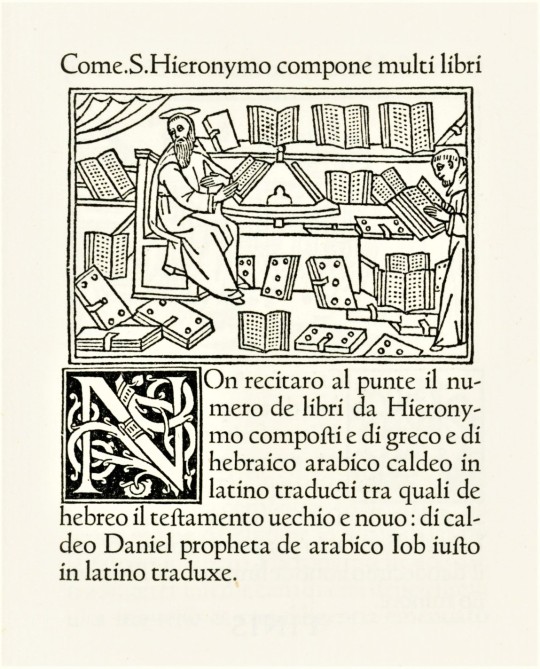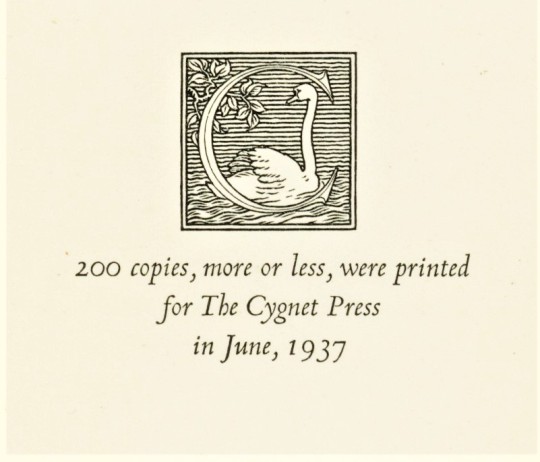#St. Jerome
Explore tagged Tumblr posts
Text

Master of the Murano Gradual (Italian, active about 1430 - 1460)
Saint Jerome Extracting a Thorn from a Lion's Paw
Cutting from a gradual, second quarter of 15th century
Tempera and gold leaf, 8 1/4 × 6 1/2 in.
#saint jerome#fine art#art#artwork#paintings#painting#artist#artists on tumblr#lion#illuminated manuscript#getty museum#italian painter#italian artist#15th century#art on tumblr#art history#art on paper#art of the day#st. jerome#antique art#manuscript#murano#italy#tempera painting#gold leaf
22 notes
·
View notes
Text

Joos van Cleve - Saint Jerome in His Study (1521)
“In 1521, while the German artist Albrecht Dürer was in Antwerp, he painted a picture of Saint Jerome in his study surrounded by objects symbolizing transience and death. The painting was a sensation, prefiguring the genre of memento mori, images that compelled contemplation of mortality. The type became a specialty of local workshops, including that of Joos van Cleve, who is associated with more than a dozen versions of this image.
The piece of paper tacked to the wall reads “Respice Finem” — consider the end. Grasping his head, Jerome points at a skull, whose craggy surface is rendered in detail. Beside him is a snuffed-out candle. Beyond such obvious symbols of death, the image is filled with subtler reminders of the passage of time. The crucifix, set above an Italianate ornamental frieze, casts a curved shadow on its niche, and next to it, a bird — possibly a finch, symbol of Christ’s Passion — is trapped in a cage.” - Harvard Art Museums
^It’s definitely a European goldfinch
12 notes
·
View notes
Text


By Courtney Mares
9 November 2024
For the first time in over a century, the historic Chair of St. Peter, a wooden throne symbolizing the pope’s magisterial authority, has been removed from its gilded bronze reliquary in St. Peter’s Basilica to be displayed for public veneration.
Pilgrims and visitors can now behold this storied relic directly in front of the basilica’s main altar, just above the tomb of St. Peter, where it will remain on display until December 8, the Solemnity of the Immaculate Conception.
According to Pietro Zander, Head of the Necropolis and Artistic Heritage Section of the Vatican:
"The last major public viewing of the chair occurred in 1867, when Pope Pius IX exposed the Chair of Peter for the veneration of the faithful for 12 days on the 1,800th anniversary of the martyrdoms of St. Peter and St. Paul."
It was the first time that the centuries-old wooden throne had been exhibited to the public since 1666 when it was first encased within Gian Lorenzo Bernini’s monumental bronze sculpture under the stained-glass Dove of the Holy Spirit window at the basilica’s apse.
Formally known as the Cathedra Sancti Petri Apostoli, or more simply as Cathedra Petri, the chair has held a revered place in Catholic tradition over the centuries, representing papal authority from St. Peter to the present.

“The chair is meant to be understood as the teacher’s ‘cathedra,’” art historian Elizabeth Lev told CNA.
“It symbolizes the pope’s duty to hand down the teaching of Christ from generation to generation.”
She explained:
“It’s antiquity [ninth century] speaks to a papacy that has endured through the ages — from St. Peter who governed a church on the run trying to evangelize with the might of the Roman Empire trying to shut him down, to the establishment of the Catholic Church and its setting down of roots in the Eternal City, to our 266th successor of St. Peter, Pope Francis.”
A Storied History

The wooden chair itself is steeped in history.
According to the Vatican, the wooden seat was likely given by the Holy Roman Emperor Charles the Bald to Pope John VIII in A.D. 875 for the emperor’s Christmas coronation in the old St. Peter’s Basilica.
A depiction of the emperor appears on the crossbeam of the chair, and its ivory panels illustrate the labors of Hercules along with other scenes from Greek mythology.
The informational sign near the chair in St. Peter’s Basilica informs visitors that “shortly after the year 1000, the Cathedra Petri began to be venerated as a relic of the seat used by the apostle Peter when he preached the Gospel first in Antioch and then in Rome.”
The Fabric of St. Peter, the organization responsible for the basilica’s upkeep, maintains:
“It cannot be ruled out that this ninth-century imperial seat may have later incorporated the panel depicting the labors of Hercules, which perhaps originally belonged to an earlier and more ancient papal seat.”
Before returning the chair to its place within Bernini’s monumental reliquary, Vatican experts will conduct a series of diagnostic tests with the Vatican Museums’ Cabinet of Scientific Research.
The ancient seat was last removed and studied from 1969 to 1974 under Pope Paul VI but was not shown to the public.
The recent restoration of Bernini’s works in the basilica, funded by the Knights of Columbus in preparation for the Catholic Church’s 2025 Jubilee Year, made it possible for the chair to be moved from the bronze sculpture in August.
Pope Francis got a sneak peak of the relic in early October and a photo of the moment — showing him sitting in a wheelchair before the Chair of St. Peter — quickly went viral.
Afterward, the pope requested that the relic be displayed for public veneration.

Francis ultimately decided that the Chair of St. Peter — a symbol of the Church’s unity under the instruction of Christ — would be unveiled for the public at the closing Mass for the Synod on Synodality.
“Pope Francis has been exceptionally generous to the faithful about displaying relics,” Lev said.
“He brought out the bones of St. Peter shortly after his election, he had the Shroud of Turin on view in 2015, and now he has taken the Chair of Peter out for veneration in the basilica.”
“In our virtual age, where much confusion reigns between what is real and what is not, Pope Francis has encouraged us to come face to face with these ancient witnesses of our faith and our traditions.”
Feast of the Chair of St. Peter

The Feast of the Chair of St. Peter, celebrated each year on February 22, dates back to the fourth century.
St. Jerome (A.D. 347–420) spoke of his respect for the “Chair of Peter,” writing in a letter:
“I follow no leader save Christ, so I enter into communion with … the Chair of Peter, for this I know is the rock upon which the Church is built.”
As Pope Benedict XVI explained in a 2006 catechesis:
“‘Cathedra’ literally means the established seat of the bishop, placed in the mother church of a diocese, which for this reason is known as a ‘cathedral.”
“It is the symbol of the bishop’s authority and in particular, of his ‘magisterium,’ that is, the evangelical teaching which, as a successor of the apostles, he is called to safeguard and to transmit to the Christian community,” he said.
When a bishop takes possession of the particular Church that has been entrusted to him, he sits on the cathedra, Benedict explained:
“From this seat, as teacher and pastor, he will guide the journey of the faithful in faith, hope, and charity.”
“The Church’s first ‘seat’ was the upper room, and it is likely that a special place was reserved for Simon Peter in that room where Mary, mother of Jesus, also prayed with the disciples,” he added.
Benedict XVI described Peter’s ministry as a journey from Jerusalem to Antioch, where he served as bishop, and ultimately to Rome.
He noted that the See of Rome, where Peter ultimately “ended his race at the service of the Gospel with martyrdom,” became recognized as the seat of his successors, with the cathedra representing the mission entrusted to Peter by Christ.
“So it is that the See of Rome, which had received the greatest of honors, also has the honor that Christ entrusted to Peter of being at the service of all the particular Churches for the edification and unity of the entire people of God,” he said.
Bernini’s Baroque Masterpiece

Bernini’s monumental reliquary for the chair, commissioned by Pope Alexander VII and completed in 1666, is one of the most iconic artworks in St. Peter’s Basilica.
Bernini encased the wooden relic within a bronze-gilded throne, dramatically raised and crowned by a stained-glass depiction of the Holy Spirit, symbolized as a dove, surrounded by sculpted angels.
The bronze throne is supported by massive statues of four doctors of the Church — two from the West, St. Augustine and St. Ambrose, and two from the East, St. John Chrysostom and St. Athanasius.
It is symbolizing the unity of the Church through the ages, bringing together the teachings of both the Latin and Greek Church Fathers.
And at the top of the throne, cherubs hold up a papal tiara and keys symbolizing papal authority.
On the chair itself, there are three gold bas-reliefs representing the Gospel episodes: "consignment of the keys" (Matthew 16:19), “feed my sheep” (John 21:17), and the "washing of the feet" (John 13:1-17).
The ongoing restoration of Bernini’s monument at the Altar of the Chair, along with the recently finished restoration of the baldacchino, is significant not only in light of the 2025 Jubilee Year but also the upcoming 400th anniversary of the Consecration of the Current St. Peter’s Basilica in 2026.
Benedict XVI said:
“Celebrating the ‘Chair’ of Peter means attributing a strong spiritual significance to it and recognizing it as a privileged sign of the love of God, the eternal Good Shepherd, who wanted to gather his whole Church and lead her on the path of salvation.”

#Chair of St. Peter#St. Peter’s Basilica#Vatican#gilded bronze reliquary#St. Peter#Solemnity of the Immaculate Conception#Pope Pius IX#Necropolis and Artistic Heritage Section#Gian Lorenzo Bernini#Dove of the Holy Spirit#Cathedra Sancti Petri Apostoli#Cathedra Petri#wooden chair#Holy Roman Emperor Charles the Bald#Pope John VIII#Fabric of St. Peter#Vatican Museum#Cabinet of Scientific Research#Pope Paul VI#Knights of Columbus#2025 Jubilee Year#Synod on Synodality#Feast of the Chair of St. Peter#St. Jerome#See of Rome#Pope Alexander VII#iconic artworks#Altar of the Chair#baldacchino
8 notes
·
View notes
Text

Franciscan Church, Church of St. Jerome, Vienna
50 notes
·
View notes
Text
“Do you pray? You speak to the Beloved. Do you read? He speaks to you.” ~St. Jerome
#Christian#God#prayer is speaking to God#reading the Scriptures is God speaking to us#St. Jerome#saints#God is the Beloved
60 notes
·
View notes
Photo

Madonna in Herrlichkeit mit dem Christkind, zwei Engelsmusikern, St. Peter, St. Dominic, St. Paul und St. Jerome (Pesaro-Altarbild) von Giovanni Girolamo Savoldo (Undatiert, oil on panel)
#kunst#kunstwerk#art#artwork#giovanni girolamo savoldo#madonna#christ child#christkind#engel#angels#st. peter#st. dominic#st. paul#st. jerome#christentum#christianity#religion#jesus#christ#herr#lord#gemälde#painting#glaube#faith#heilig#holy
23 notes
·
View notes
Text
Saint Jerome in His Study -- Joos van Cleve
y1982-76 Saint Jerome in His Study, 1528 Joos van Cleve, (c. 1485–1540/41)

View On WordPress
2 notes
·
View notes
Photo










It’s Fine Press Friday!
On this first #Fine Press Friday of 2023, we present a couple of items from one of the more obscure 20th-century American private presses, the Cygnet Press of Cambridge, Massachusetts. Cygnet Press was founded in 1928 and co-managed by two Harvard academics, George Parker Winship (1871-1952) and Philip Hofer (1898-1984). Winship was the long-time curator for both the John Carter Brown Collection at Brown University and the Harry Elkins Widener Collection at Harvard University. Hofer had been curator for the Spencer Collection of the New York Public Library and assistant director of the Morgan Library before founding the Department of Printing and Graphic Arts at Harvard’s Houghton Library. Both librarians maintained a strong interest in fine press printing and printing history.
The first book off the press was a 1934 facsimile edition of Vita de Sancto Hieronymo (the first eight images), an Italian translation of the letters of St. Jerome by Matteo da Ferrara, originally printed in Ferrara by Lorenzo di Rossi da Valenza in 1497. In a 1934 letter that accompanied a different copy of this book, Hofer wrote: “The little book which accompanies this note is one which George Parker Winship and I set by hand and printed a few years ago. It amused us, and, I hope, will amuse you. Of course we would do it differently now - that is always the way!"
The last two images are from a very slim booklet entitled Tanatlus, the fourth imprint from the press, printed for friends in 1937 in an edition of 200 copies. The publication focuses on the color wood engraving of the punishment of the Greek mythological figure Tantalus. The engraving, by the master Czech American wood engraver, illustrator, and type and book designer Rudolph Ruzicka (1883-1978), was designed after a watercolor by Hans Holbein the Younger, “which the best woodcutter of Holbein’s time could not have bettered.”
The original watercolor, conjectured to have been intended as a jeweler’s design, had been acquired by someone in Winship’s and Hofer’s circle in 1936. Ruzicka made seven blocks printed in different colors and values “to make an almost perfect counterpart of the original . . . .” To explain the image, the Greek texts of Homer and Pindar and the Latin text of Horace, along with English translations, are printed as part of the booklet.
Our copies of these two publications are gifts from our friend Jerry Buff.
View more posts with work by Rudolph Ruzicka.
View more Fine Press Friday posts.
View more posts with wood engravings!
#Fine Press Friday#Fine Press Fridays#Cygnet Press#George Parker Winship#Philip Hofer#Rudolph Ruzicka#Harvard#Vita de Sancto Hieronymo#St. Jerome#Matteo da Ferrara#Tantalus#Hans Holbein the Younger#wood engravings#fine press books#private presses
39 notes
·
View notes
Text
Good, better, best. Never let it rest. "Til your good is better & your better is best.
(St. Jerome)
27 notes
·
View notes
Text

St. Dorothy, Virgin, Martyr (288 AC) Feast Day: February 6th
St. Dorothy was martyred in 288 by Fabricius. Because he lusted for Dorothy and desired to inherit her fortune, he attempted to marry her. However, Dorothy dedicated herself to God, denying him several times. Fabritius sought an opportunity for vengeance. Around the time of Emperor Diocletian, Fabricius brought Dorothea to his judgment to make her renounce God and sacrifice to idols. She responded, "My name is Dorothea, and I am a Christian; the true God and Lord forbids me to sacrifice someone other than him alone. Tell me, O Fabricius, if two command the opposite, an earthly ruler and a heavenly ruler, whom should I obey, the immortal God or a man?" Fabricius replied: "Don't be foolish, obey, sacrifice to the gods, where not, then you shall feel terrible torment!" Dorothea: "I fear only God, but not the torments you threaten me; these are easy and soon over, but the torments of hell are severe and eternal."
After he ordered her to be tortured with rods and whips, she remained steadfast, eager to be with God. She was thrown into the dungeon but miraculously healed there. Then, he tried to change Dorothy's mind through flattery. Unsuccessful still, he handed Dorothy over to two sisters, Christina, and Kallista, who denied Jesus and vowed to make Dorothy follow in their footsteps. However, Dorothy convinced them to join her in martyrdom. Crying at her feet, they publicly asked for her intercession and swore to die as Christians. Fabricius summoned the sisters, hoping to hear that Dorothy changed her mind, only for them to say, "We sinned because we fell away from the Christian faith; Dorothea led us to knowledge and repentance; we revoke our apostasy and want to belong to the Christian faith from now on." Enraged, the tyrant threatened them with cruel tortures, but the sisters remained steadfast in their vows and were lowered and burned in a cauldron. At their last moment, Dorothea shouted to them: "Go ahead! Your case is forgiven by God! You have found the already lost torture crown again. The merciful Father, who received the prodigal Son, will receive you with joy." At that time, Dorothy had already been through a series of tortures, being stretched and burned with torches. She gave no indication of her torment, keeping a smile and heavenly joy. The tyrant asked her: "Why are you happy amid torment and torment?" The Virgin answered him: "Never before have I had such joy in my life because I snatched the souls of my sisters from the fraudulent enemy and won them back for the Christian faith. Lieutenant, do not hesitate to complete me too to come into their company because I have long longed to come to my beloved, in whose garden I will pick roses and apples and feast with him forever." Frustrated by Dorothy, he sentenced her to death. Hearing the verdict, she exclaimed loudly, "My Lord and my God!... groom of my soul, thank you for honoring me for paradise and your blessed community." As she was led to her execution, a writer named Theophilus approached her mockingly, saying, "Listen, you bride of Christ! Send me some apples or roses from your lover's garden." Then, with holy seriousness, the Virgin said to him: "Your desire will be fulfilled. Don't doubt I'll send you roses and apples." Arriving at her execution place, she threw herself on her knees and prayed. Suddenly a heavenly boy was standing in front of her, who offered her three apples and three roses. Dear brother, said Dorothea, bring this gift to the young man Theophilus and tell him: Dorothea sends you these fruits and flowers from the garden of her heavenly groom. After these words, she was killed. Meanwhile, Theophilus laughed to tell his friends what he wanted from Dorothea and what she promised him. He was standing at the window when suddenly a boy stepped in front of him, took him aside, and said: "My sister Dorothea sends you these apples and roses from her lover's garden. When he spoke such things, he disappeared. Amazed at the beauty of the fruits and flowers that he held in his hands, even though it was wintertime, he exclaimed, enlightened by the divine light: "Surely, there is no other god but the God of Christians. Faith in Christ is not a deception. I want to worship him alone now, serve him alone." When the governor got word, he had the newly converted called before him, and since he could not dissuade him from faith in Christ by any threat, he was tortured, burned with torches, and beheaded. Dorothea is depicted in virgin garb, with roses and fruits next to her. On the 6th of February, her name is listed in the old martyrologies attributed to St. Jerome.
#St. Dorothy#St. Dorothy Quotes#Saint Dorothy Quotes#Saint Dorothy#St. Dorothea#Catholic saints#catholic saint quotes#saint quotes#quotes from the saints#st. jerome#saint#jesus#mary#joseph#christian#trad#tradition#tradlr#tradblr#traditional media#traditional#sspx#tridentine#mass#ora pro nobis#feast day#original post#original art#original content#ancient
19 notes
·
View notes
Text
“The Church of Christ has been founded by shedding its own blood, not that of others; by enduring outrage, not by inflicting it. Persecutions have made it grow; martyrdoms have crowned it.”
- St. Jerome
13 notes
·
View notes
Text

Joos van Cleve - Saint Jerome in Penitence (1516-1518)
5 notes
·
View notes
Text

Photo by Samantha Lindsey on Instagram

Source of picture: https://cassianus.tumblr.com

Source of picture: https://cassianus.tumblr.com
"Ignorance of the Scriptures is ignorance of Christ." St. Jerome
#St. Jerome#quotes#Ignorance of the Scriptures is ignorance of Christ#Scriptures#ignorance#God#Jesus#Christ#Jesus Christ#Father#Son#Holy Spirit#Holy Trinity#christian religion#faith#hope#love#stress reliever
4 notes
·
View notes
Text

St Jerome speaking on how to tame the body when concupiscence flares up
“I will tame you by hunger and thirst, I will load you with heavy weights and accustom you to heat and cold so that you shall think more of food than of pleasure”
13 notes
·
View notes
Text

#catholicism#roman catholic#catholic#september feasts#st. matthew#st. jerome#historic events#biblical events#autobiographic
2 notes
·
View notes
Text




my reproduction of caravaggio’s st. jerome! done in acrylic, 16”x20”
i just started painting this semester; this is my fourth painting and first one in full color!
if you’d like to help me get an easel (and feed myself lol), please consider buying me a ko-fi!
0 notes